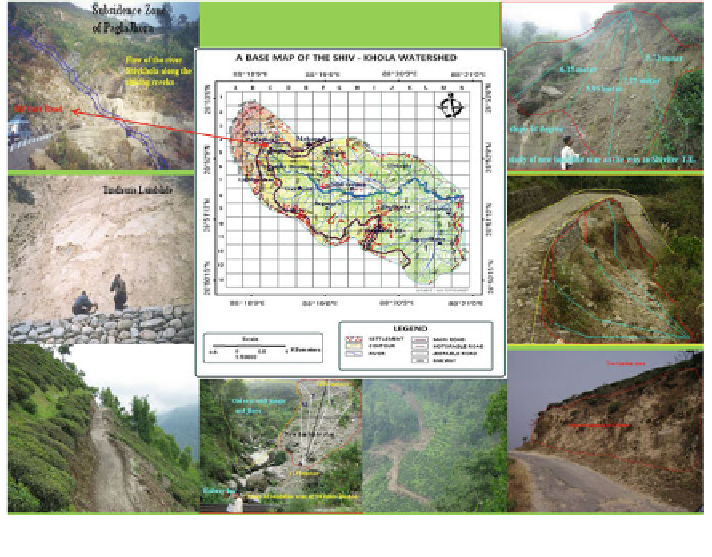Geoscience Reference
In-Depth Information
Soil Sample Analysis Sites
Shiviter T.E.
S.F.-0.980
Cohesion-0.07
S.F.-0.951
Cohesion-0.162
Nurbong T.E.
S.F.-0.999
Cohesion-0.035
S.F.-0.978
Cohesion-0.105
Gayabari Lower
S.F.-1.07
Cohesion-0.15
Sepoydhura T.E.
S.F.-0.99
Cohesion-0.05
Tindharia T.E.
S.F.-0.99
Cohesion-o.123
S.F.-0.96
Cohesion-0.149
Fig. 6.2 Major landslide locations with
'
FS
'
value in the watershed
6.4.1 Shear Stress
Shear stress is a force which deforms a mass of material by one part sliding over
another along one or more failure plains. This is a force per unit area which is
parallel to the surface of a body. This kind of stress is perpendicular to the normal
stress. The rupture angle is obtained by developing Stress circle (Fig.
7.2
). The
shear stress is obtained by the following formula.
Þ
¼
r
1
r
3
2
s ð
shesr stress
sin
2
a
ð
6
:
16
Þ
where,
˃
1
= major stress;
˃
3
= minor stress; and
ʱ
= rupture angle.
6.4.2 Shear Strength
This is a measure of the ability of a material to resist shear stress. This is an
important parameter in determining the engineering and geomorphic parameters of
the materials. Shear strength of the soil depends on the normal stress, angle of
internal friction and cohesion which is determined applying the following formula:








Search WWH ::

Custom Search